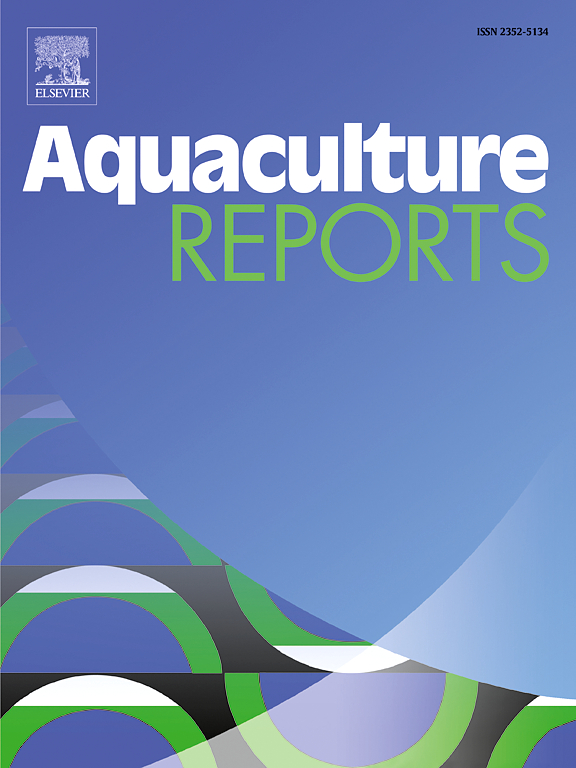Implementing an environmental DNA/RNA-based approach to non-invasively investigate disease caused by Ichthyophthirius multifiliis
IF 3.2
2区 农林科学
Q1 FISHERIES
引用次数: 0
Abstract
Infectious diseases impose a substantial burden on aquaculture, acting as a significant constraint on production yields, entailing considerable management costs. White spot disease, which is caused by the protozoan fish parasite, Ichthyophthirius multifiliis (Ich), is a good example of a disease which continuously cause major challenge for the aquaculture worldwide. Utilization of environmental DNA/RNA (eNA) extracted from fish water for pathogen detection and quantification offers a potentially non-invasive and routine strategy for monitoring diseases in aquaculture systems. In this experimental study, rainbow trout (Oncorhynchus mykiss) were challenged with Ich in two concentrations. The eNA was extracted from the tank water and was used to detect the parasite throughout the course of the disease targeting a gene encoding an Ich immobilization antigen (Iag52a). Simultaneously, the parasite burden and immune-relevant gene expression in both water and fish gills were investigated. The results showed that the level of Ich eNA exhibited a peak at the onset of mortality at 10 days post challenge (dpc), decreasing at 12 dpc. Most immune relevant genes expressed in the gills were downregulated at 2 dpc and upregulated at 8 dpc. The gene expression of two acute phase proteins from the host, Serum amyloid A (SAA) and Hepcidin, were investigated both in the gills and in the water. The two genes were downregulated in water at 10 dpc, coinciding with the peak mortality time point and the highest parasite eNA load in the water. This study provides an insight into the pathogen eNA dynamics where a Ct value of 18–25 of iag52a indicated critical disease outbreak.
求助全文
约1分钟内获得全文
求助全文
来源期刊

Aquaculture Reports
Agricultural and Biological Sciences-Animal Science and Zoology
CiteScore
5.90
自引率
8.10%
发文量
469
审稿时长
77 days
期刊介绍:
Aquaculture Reports will publish original research papers and reviews documenting outstanding science with a regional context and focus, answering the need for high quality information on novel species, systems and regions in emerging areas of aquaculture research and development, such as integrated multi-trophic aquaculture, urban aquaculture, ornamental, unfed aquaculture, offshore aquaculture and others. Papers having industry research as priority and encompassing product development research or current industry practice are encouraged.
 求助内容:
求助内容: 应助结果提醒方式:
应助结果提醒方式:


